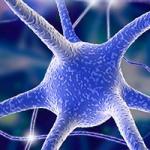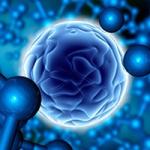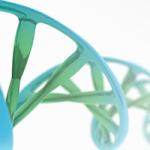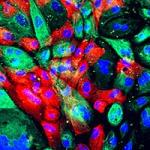
Research Topics
Dr. Ashok Kulkarni's research focuses on understanding the cellular mechanisms that promote pain hypersensitivity using both mouse models and human clinical samples. The ability to perform genetic engineering in mice has allowed for the identification of pain genes that modulate pain signaling. As such, his group demonstrated that the activity of the neuronal enzyme CDK5 has a key role in regulating pain perception. A needed advancement beyond the traditional use of rodent models in pain research has recently occurred as human sensory ganglia have become available from organ transplant donors for scientific study. Dr. Kulkarni's lab has thereby been able to complement his rodent pain models with multi-omic analysis of human dorsal root ganglia from donors with chronic pain conditions like rheumatoid arthritis, diabetic painful neuropathy, and fibromyalgia, which are examples of chronic inflammatory pain, neuropathic pain, and nociplastic pain respectively. Such studies are important as 1 in 5 adults in the U.S. experience chronic pain, where women are more frequently affected than men. Principally, a better understanding of human nociception is vitally needed in order to better design targeted pain drugs that lack the side effects of current treatments, such as with opioids. Work with mouse models and with limited but critically important human neuronal samples will be conducted in the lab with the goal of finding new therapeutic targets to control and alleviate pain hypersensitivity.
Biography
Dr. Kulkarni received his Ph.D. from Maharaja Sayajirao University in Baroda, India. He was a postdoctoral fellow at Columbia University, New York, from 1982 to 1987, and then a senior staff fellow at the National Institute of Neurological Disorders and Stroke at NIH from 1987 to 1995. In 1995, he joined NIDCR as a tenure-track investigator to head the Functional Genomics Unit and the Gene Transfer Facility. In 2000, he was tenured as a senior investigator and appointed chief of the Functional Genomics Section at NIDCR. His laboratory studies the molecular mechanisms involved in chronic pain affecting the oral and craniofacial areas. He is a member of the American Association for Dental, Oral, and Craniofacial Research; the International Association for Dental, Oral, and Craniofacial Research; the Society for Neuroscience; and the International Association for the Study of Pain. He currently serves as a reviewer for numerous scientific journals and as an editorial board member for Nature Scientific Reports.
Selected Publications
- Hall BE, Macdonald E, Cassidy M, Yun S, Sapio MR, Ray P, Doty M, Nara P, Burton MD, Shiers S, Ray-Chaudhury A, Mannes AJ, Price TJ, Iadarola MJ, Kulkarni AB. Transcriptomic analysis of human sensory neurons in painful diabetic neuropathy reveals inflammation and neuronal loss. Sci Rep. 2022;12(1):4729.
- Hu M, Doyle AD, Yamada KM, Kulkarni AB. Visualization of trigeminal ganglion sensory neuronal signaling regulated by Cdk5. Cell Rep. 2022;38(10):110458.
- Pareek TK, Keller J, Kesavapany S, Agarwal N, Kuner R, Pant HC, Iadarola MJ, Brady RO, Kulkarni AB. Cyclin-dependent kinase 5 modulates nociceptive signaling through direct phosphorylation of transient receptor potential vanilloid 1. Proc Natl Acad Sci U S A. 2007;104(2):660-5.
- Ohshima T, Ward JM, Huh CG, Longenecker G, Veeranna, Pant HC, Brady RO, Martin LJ, Kulkarni AB. Targeted disruption of the cyclin-dependent kinase 5 gene results in abnormal corticogenesis, neuronal pathology and perinatal death. Proc Natl Acad Sci U S A. 1996;93(20):11173-8.
- Kulkarni AB, Huh CG, Becker D, Geiser A, Lyght M, Flanders KC, Roberts AB, Sporn MB, Ward JM, Karlsson S. Transforming growth factor beta 1 null mutation in mice causes excessive inflammatory response and early death. Proc Natl Acad Sci U S A. 1993;90(2):770-4.
Related Scientific Focus Areas


Molecular Biology and Biochemistry
View additional Principal Investigators in Molecular Biology and Biochemistry



This page was last updated on Wednesday, March 26, 2025